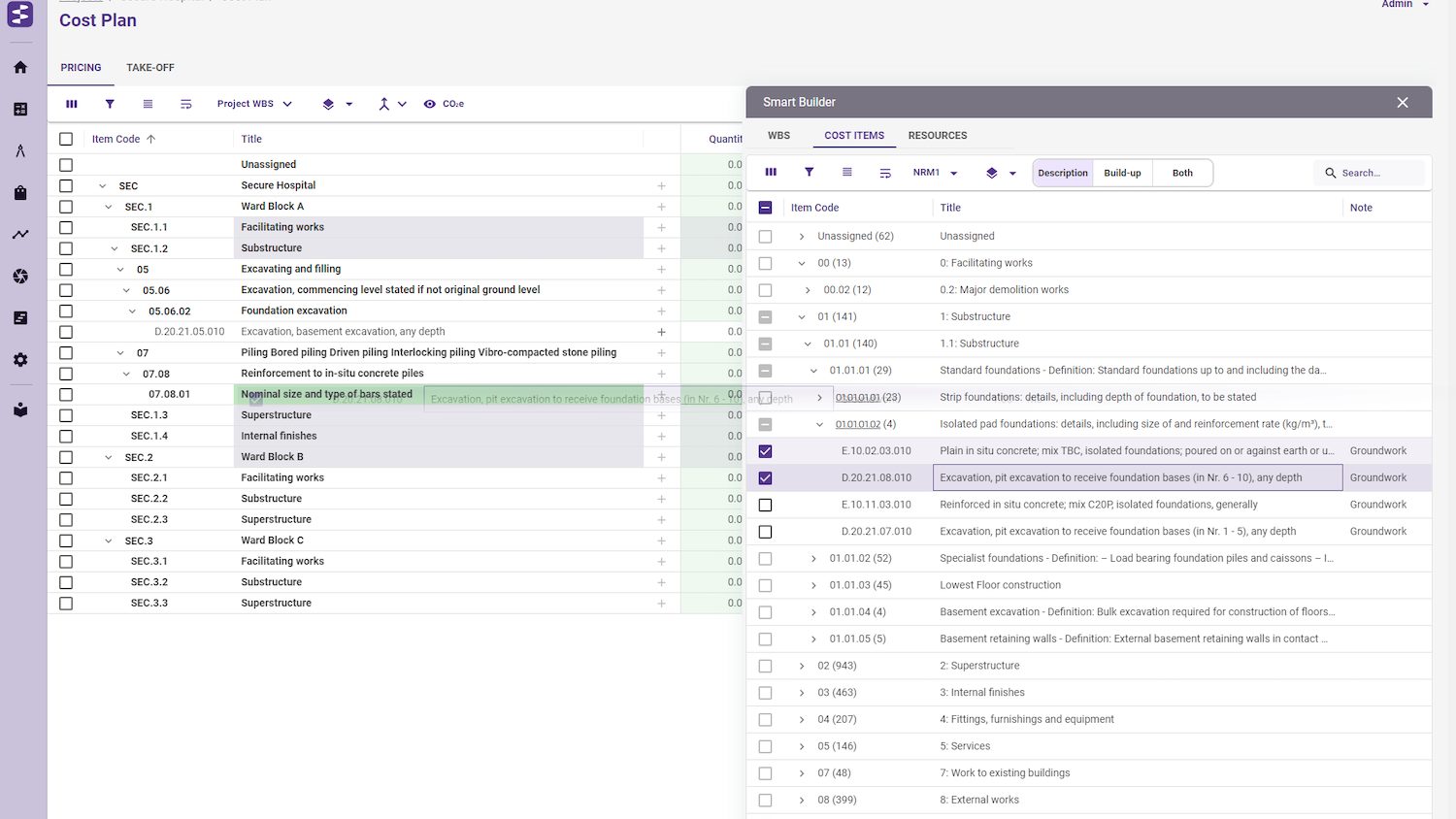
Sterling DCS has launched a cost and carbon estimating software, Smart Builder, that it claims will revolutionise the discipline.
According to Sterling, the key differentiator for Smart Builder is its drag and drop functionality, which simplifies and speeds up an estimator’s task.
The new software includes:
- rapid cost plan formulation that allows users to quickly select their preferred structures, enabling them to quantify and price at any level with “remarkable efficiency”;
- functionality that allows users to drag and drop individual lines, groups or entire sections of NRM2 into their cost plans, complete with their IDs for validation against relevant rule sets;
- the streamlining of the selection of multiple resources and complex resource pricing, allowing users to accomplish these tasks in one process. This capability is particularly beneficial for estimators managing diverse resources across multiple projects, Sterling claims;
- functionality that allows users to establish the project structure at the top level, applying NRM1 for quantifying and pricing at any level. As project details evolve, users can integrate an array of NRM2, SMM7 and, when appropriate, CESSM structures within a single solution, fostering transparency and consistency across the estimating process;
- the ability to pivot estimates to preferred reporting formats, recognising that each project can have unique reporting requirements; and
- an “intuitive design” that eliminates the need for multiple windows or forms, simplifying an estimator’s workflow.
Sterling DCS will also provide ongoing support and resources to help users maximise their use of Smart Builder, including training sessions and webinars.
Sterling’s clients include the likes of Morgan Sindall, Turner & Townsend and WSP.
Simplicity should drive performance
Sterling DCS chief executive Steve Brunning said: “We believe that simplicity should drive performance. Smart Builder embodies our commitment to providing powerful tools that enhance the estimator’s experience while maintaining the integrity of complex data. By avoiding the constant flipping between processes, users can now copy one, many, or entire preferred structures seamlessly.
“The team has extended this functionality to allow for easy switching between structures and resources at any time, which will save a significant amount of time and reduce errors. This feature not only reduces friction in the estimating process, but also empowers users to take control of their projects with confidence.”
Don’t miss out on BIM and digital construction news: sign up to receive the BIMplus newsletter.












